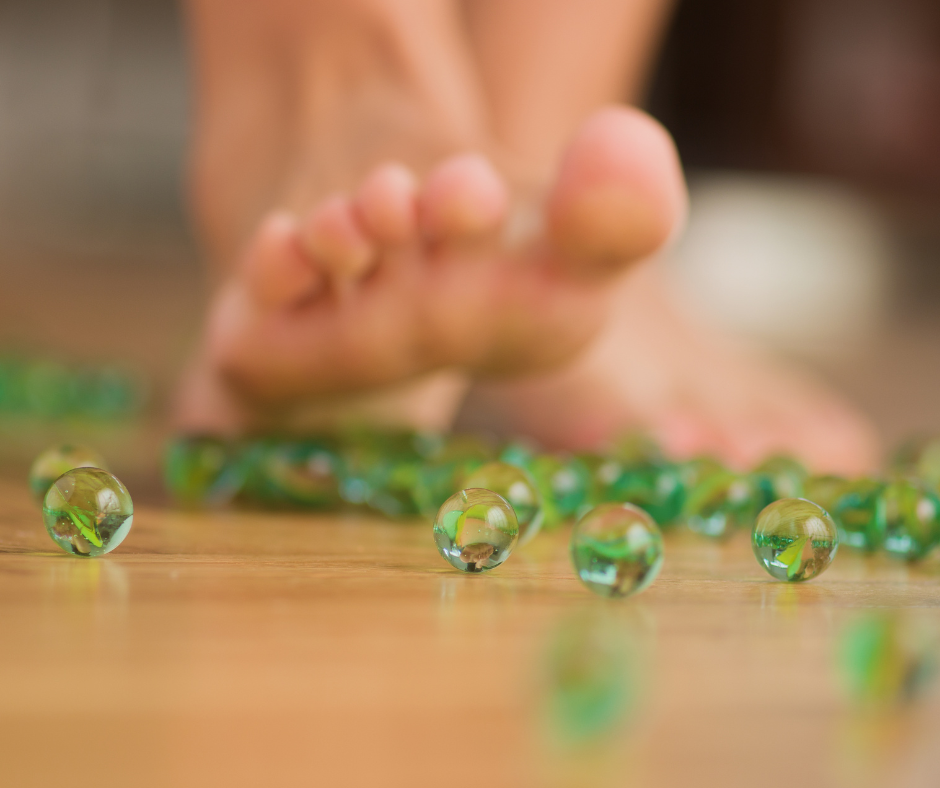That ‘Walking on Marbles’ Feeling? It Might Be Rheumatoid Arthritis (But We Can Help!)
Rheumatoid Arthritis (RA) is a systemic condition that can affect your entire body. That said, your feet often pay a higher price than the rest of you.
The persistent pain, stiffness, and changing shape of your feet are not just side effects; rather, they are a central part of the RA experience that can severely impact your mobility and quality of life. In this blog, the Reconstructive Foot & Ankle Institute will help you understand what’s happening to your feet…and help do something about it!
Why Does RA Attack the Feet So Aggressively?
Rheumatoid Arthritis is an autoimmune disease, which means your body’s immune system mistakenly attacks its own healthy tissues. It tends to target the delicate lining of the small joints, and your feet are filled with them: 33 joints in each foot, to be exact!
This constant attack leads to:
- Chronic Inflammation: Causing pain, swelling, and warmth in the joints.
- Joint Damage: Over time, the inflammation can erode cartilage and bone.
- Development of Deformities: As the joints become unstable, the feet can begin to change shape, leading to severe foot deformities like bunions and hammertoes.
Many patients describe the feeling of prominent bones on the bottom of their forefoot as “walking on marbles.”
Recognizing the Signs: An RA Foot Health Checklist
If you have RA, be vigilant for these specific foot-related symptoms. Addressing them early is key to preventing long-term damage.
- Do you have persistent aching, stiffness, or tenderness in your toe joints, especially in the morning?
- Are the joints in your feet often warm to the touch or visibly swollen?
- Have you noticed new bumps forming, or are your toes drifting out of alignment?
- Is it becoming increasingly difficult to find shoes that don’t cause pain?
- Do you feel painful pressure on the balls of your feet when you walk?
If you’re nodding along to this list, it’s a clear sign that it’s time to make a podiatrist a central part of your RA care team.
A Podiatrist’s Approach to Managing RA Foot Pain
Our primary goal is to relieve pain, protect your joints, and maintain your mobility using the most effective and least invasive methods possible.
As Dr. Michaels Says:
- “We use the most natural treatments available to this, which means usually an external support of some kind.”
- There are numerous different devices we use, but the most common recommendation is to wear good shoes and custom foot orthotics.”
- “We have all of the best devices in-house, and most are covered by your insurance plan.”
Your personalized conservative care plan may include:
- Custom Foot Orthotics: These are not simple shoe inserts. They are prescription medical devices crafted to:
- Provide support
- Cushion inflamed joints
- Accommodate deformities.
- Proper Footwear: We can guide you in selecting shoes with a wide, deep toe box and a supportive sole to reduce pressure and friction on painful joints.
- Managing Flare-Ups: For periods of intense inflammation, treatments like cortisone injections can provide targeted relief.
When Is It Time to Consider Surgical Options?
When conservative measures no longer provide adequate relief and the deformities become severe, reconstructive surgery may be the best option to restore function and alleviate chronic pain.
- The goal of surgery for an arthritic foot is to realign the toes and remove the prominent, painful bones that are making it difficult to walk.
- While this can involve complex procedures, the outcome is a more stable, functional, and comfortable foot.
Struggling with the complications of RA? As Dr. Michaels often says…
“If it’s below the knee, think of me!”
The Reconstructive Foot & Ankle Institute offers comprehensive podiatric services, so call us at 301-797-8554 or contact us to schedule an appointment. Located in Hagerstown & Frederick, MD, we’re ready to meet any of your foot health needs.


